Table of Contents
‘Mate, good form, how many reps do you do? Well Mary, you’ve lost some weight, and you really look good. I bet you’ve done a lot of reps of every exercise as it is written and recommended everywhere?’ What can be done is that the effort to imitate successful patterns is somehow in everyone’s blood, and naturally, we try to find the most effective methods to grow muscle, lose weight or improve physical condition. Then it’s very easy to try out a nutrition and training plan recommended by someone who also just managed to achieve the goal you are aiming for. But what applies to one may not apply to all, and it may not be the most meaningful and effective way. Let’s explain everything and point out why you should definitely not be afraid of heavyweights even when losing weight.
How many reps should you do to gain muscle?
What is the ideal number of reps to build muscle? This is a very difficult question, to which even the best scientific experts would answer that it is a matter of the current level of knowledge. Even if every guy in your gym has a quick and accurate answer, when they’re about to fire a clear shot that it’s 8-12 reps, it’s not that simple. There are a number of factors that come into play that can bend this range somewhat for each person at a particular point in their sporting life. The issue is thus confused by the level and training history of the athlete, age, time taken to regenerate, the overall training plan and specific exercises. First, let’s see what are the most important training factors for muscle growth based on Brad Schoenfeld’s thorough work (2010). [1]
3 mechanisms for muscle growth:
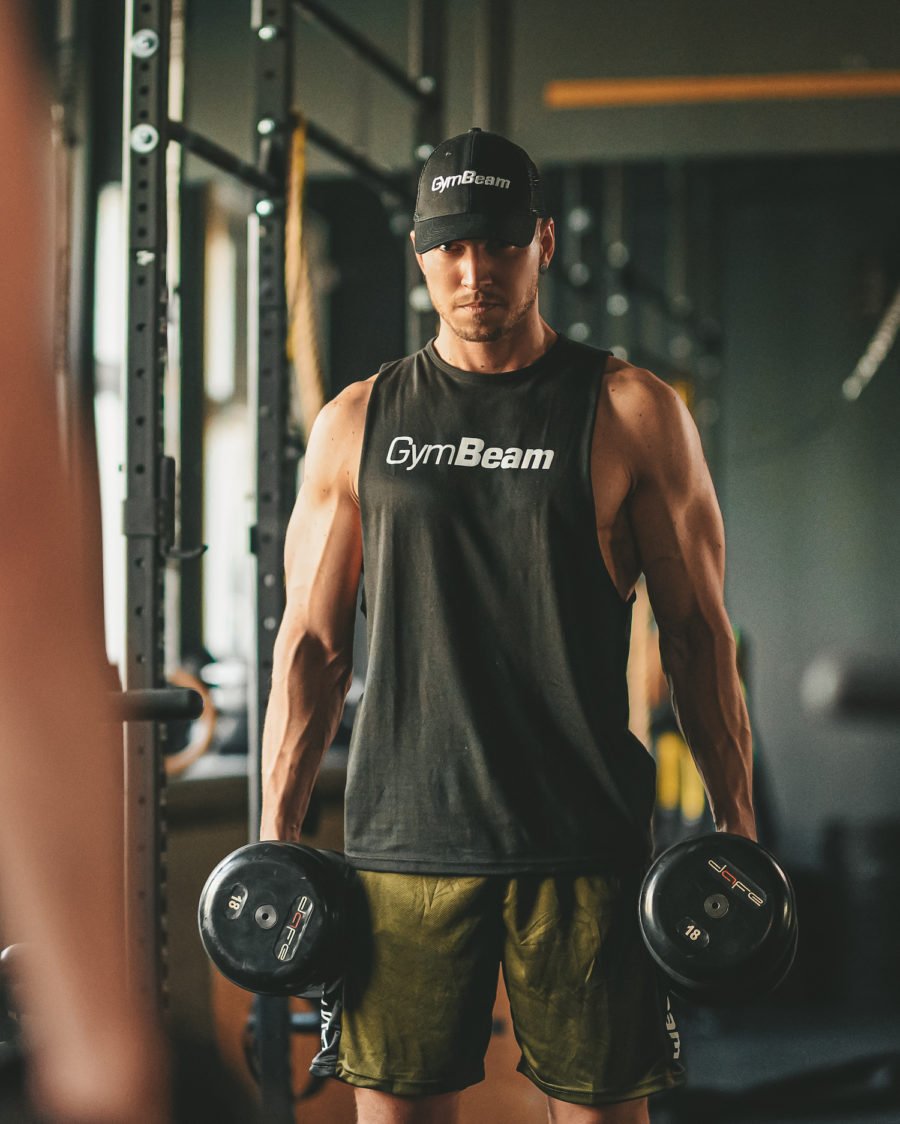
- Mechanical tension increases with load on the barbell. The greatest mechanical tension is achieved by using a low number of reps (approximately up to 6) with a load close to the raised maximum weight (1RM).
- Muscle damage is the result of a total training load (training volume per muscle part), which is manifested on muscle cells by damage and the formation of micro-traumas. To achieve optimal muscle damage, a mean number of exercise reps (approximately 8-12) with a load of 60-75% of 1RM is typical.
- Metabolic stress increases with more reps per set that is characteristic of a “pump sets” with a high number of reps (15+) to the point where the muscles literally “burn”. Greater metabolic stress can be achieved by a longer time under tension (TUT).
To continuously improve and enhance performance it is necessary to increase intensity of training and try to achieve progressive overload. Thanks to this, you will get a slightly more intense training impulse, which will manifest itself in larger muscle and strength gains. We should not forget the correct periodization of training and after the strength mesocycle choose about a week long deload with roughly 50% reduction in the intensity of training to fully reflect the increase in strength and muscle mass. [3]
For the most efficient and fastest muscle gain, choose sets with a wide range of reps
In 2017, Schoenfeld and the team, in their extensive work involving an analysis of 21 studies, showed that muscle growth is actually comparable to using a wide range of exercise repetitions, provided that you do each set close to muscle failure. How can you tell? Simply by feeling like you don’t have an extra reps in reserve. So muscle growth is comparable at 6, 10, 15, or even 30 reps with a load that allows you to get close to muscle failure for a given number of reps. [4]
Given the nature of muscle hypertrophy mechanisms, it seems ideal to practice a set with a wide range of reps. In fact, this is also implicitly confirmed by the high-quality work by Schoenfeld et al. in early 2021, which raises more questions than answers. Incorporating a set with a high number of reps seems more appropriate for isolated exercises, as is typically the case for biceps or triceps exercises. In the case of complex multi-joint exercises, on the other hand, it is better to keep a lower profile (lower number of reps), given that deadlifts or squats are far more exhausting than isolated exercises on the neuromuscular system, which also needs sufficient room for regeneration. [5-6]

In the case of training with more reps per set, it seems to require more effort and “discomfort,” which makes it possible for athletes to give up before they achieve real muscle failure. I’m sure you have found yourself in situations where you thought you weren’t able to go on, but you still found the hidden strength and did a few extra reps. The work of Santaniel et al., found no benefit in performing a number of reps leading to a state of muscular failure, is confusing, as evidenced by the fact that the training plan needs to be viewed as a whole, and not just as “separate parts.” [7-9]
In the context of a training program, it is usually not just an increase in muscle mass, but also muscle strength. Its development is characterised by approximately 2-3 reps with a load of 90-95 % 1RM (maximum lifted weight with correct technique for one rep). In contrast, high repetition rates, expressed in roughly more than 15 reps, are most often used to build muscle endurance.
You can use a wide range of reps in your training schedule, but you should particularly be aware of why you exercise just as you do and wonder if it is a really good idea to train with 5, 10 or 20 reps with such a heavy load. Also, remember that complete muscle regeneration after a strength load occurs in about 24-72 hours. Given the time needed for regeneration, it seems appropriate to exercise one muscle part about twice a week. [2]
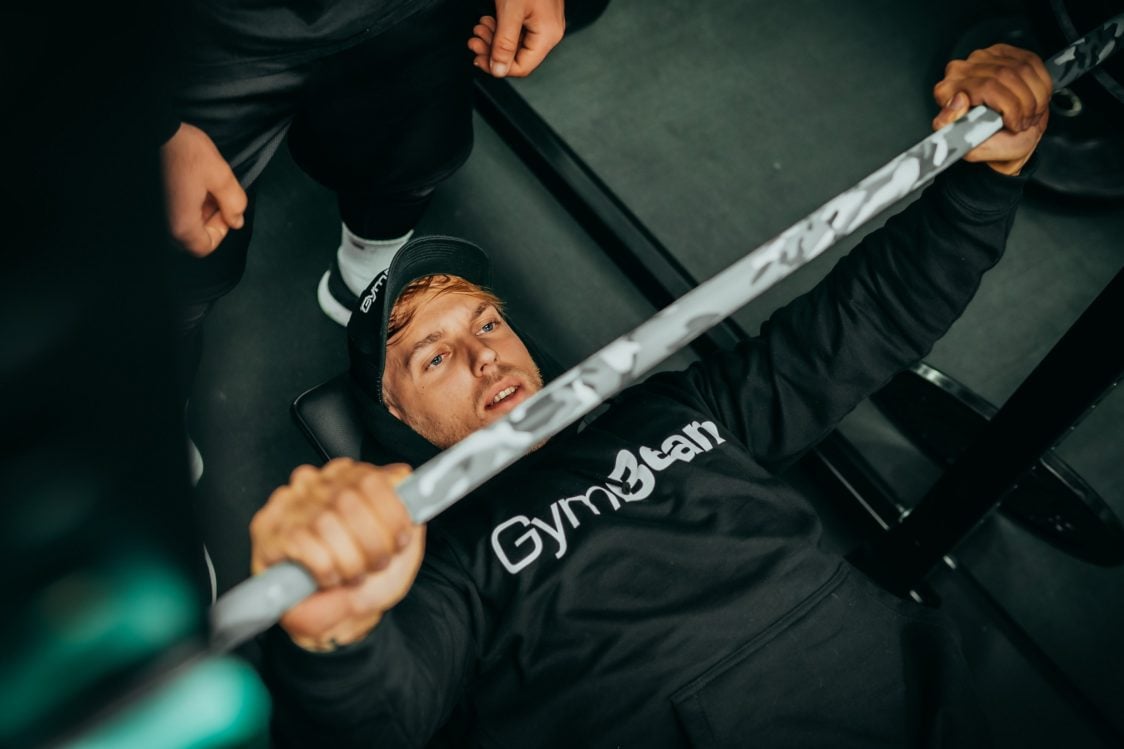
The most common myths about strength training, the number of reps per set and muscle gain
1. Lifting the maximum weight is the best path to muscle growth
From time to time, even in your favourite gym you can encounter cases where young men in particular try to train to the maximum limit of their possibilities. Aside from proper technique, which, especially because of the rounded back in deadlift, results in intervertebral disc problems, and therefore such exercises have absolutely no merit.
After one reps per set, the muscles don’t gain much, and it also excessively depletes the nervous system, which then needs more space to regenerate. Maximal testing (1RM) has its place at the beginning and end of the training cycle to find out how to adjust your training load appropriately and where you have been able to push yourself over the time during training. [6]
You might be interested in these products:
2. It is ideal to train in the range of 8-12 reps, otherwise it is not worth it
As we said above, you can stimulate muscle growth using a wide range of reps, and this is not necessarily the traditional 8 – 12 reps per set recommended in bodybuilding. The most important thing is to use a load with which you should have about 1-3 reps in reserve. Sets where you want to apply a larger number of reps close to muscle failure should be saved for the last set. This appears to be an advantageous solution, especially in the case of isolated exercises. [3-9]
3. Muscles grow only after lifting heavy weights
Just look around the sports disciplines, and you will see a number of athletes who have achieved muscular hypertrophy due to the nature of their sport discipline. We do not have to go far, and we can notice that sprint or high-intensity training of track cyclists also stimulates muscle growth. Of course, there is also a strength component in the training program of these athletes, but a sufficiently intense growth impulse can also be achieved by high-intensity training. [10-11]
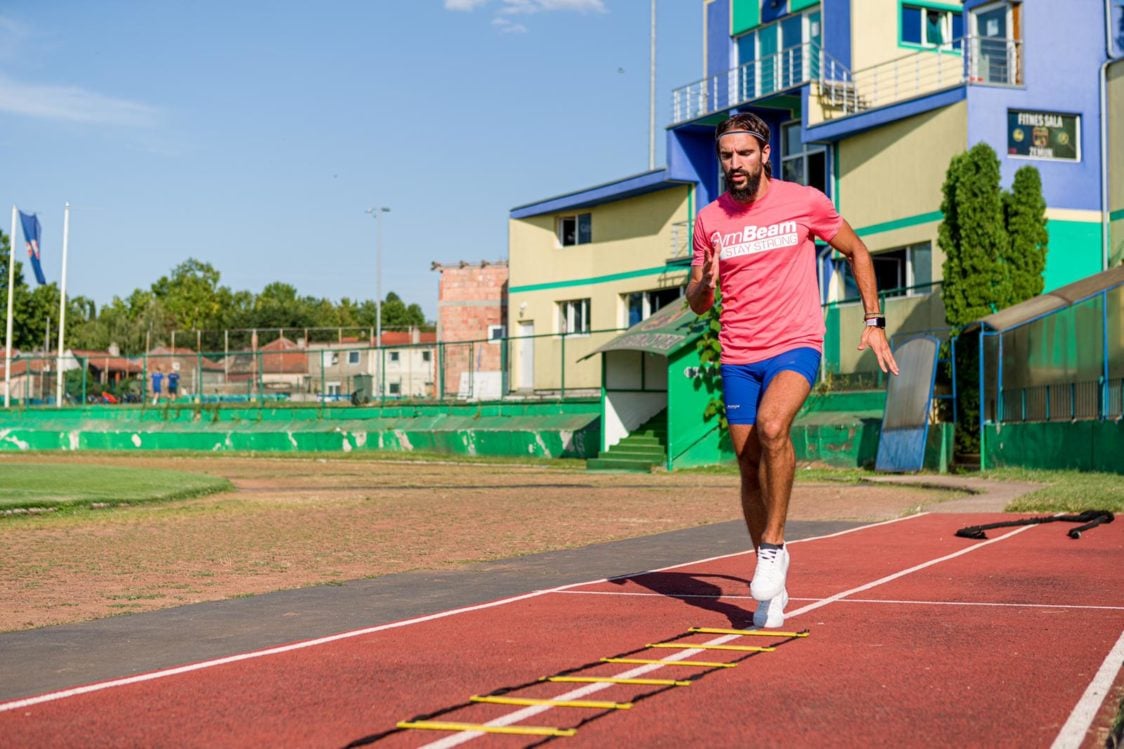
4. High reps are best for getting lean
What does it mean to build lean muscle? For most people, this means getting rid of subcutaneous fat and maintaining or enlarging muscle mass. From this perspective, it is again advisable to use a wide range of reps close to muscle failure. You can keep up to 3 reps in reserve. In general, it may be better to practice the often recommended 8-12 reps with a load of 60-75% of your maximum in a given exercise than to try to get close to muscle failure with a light dumbbell or resistance band. When reducing fatty tissue, it is important to train hard enough to maintain as much muscle as possible and have a balanced diet with enough protein for your body needs. [12]
5. If you are not sore, your training wasn’t effective
Muscle pain after training or DOMS (Delayed Onset Muscle Soreness) is most likely caused by muscle damage from training alone. It typically appears 24-72 hours after training. As you know, after hard squats, the biggest problem is to go down the stairs on the 2nd to 3rd day after the training session itself. However, muscle damage does not seem to be strictly necessary for muscle growth, and due to muscle growth it is possible to train without muscle pain. [13]
When returning to training after a long break or injury, it inevitably hurts, but over time with increasing fitness and a whole cascade of adaptive changes you can really train effectively even without muscle pain. In case you are interested in what to eat and how to exercise for an effective increase in muscle mass, read our article What to Eat and How to Exercise to Finally Gain Muscle?
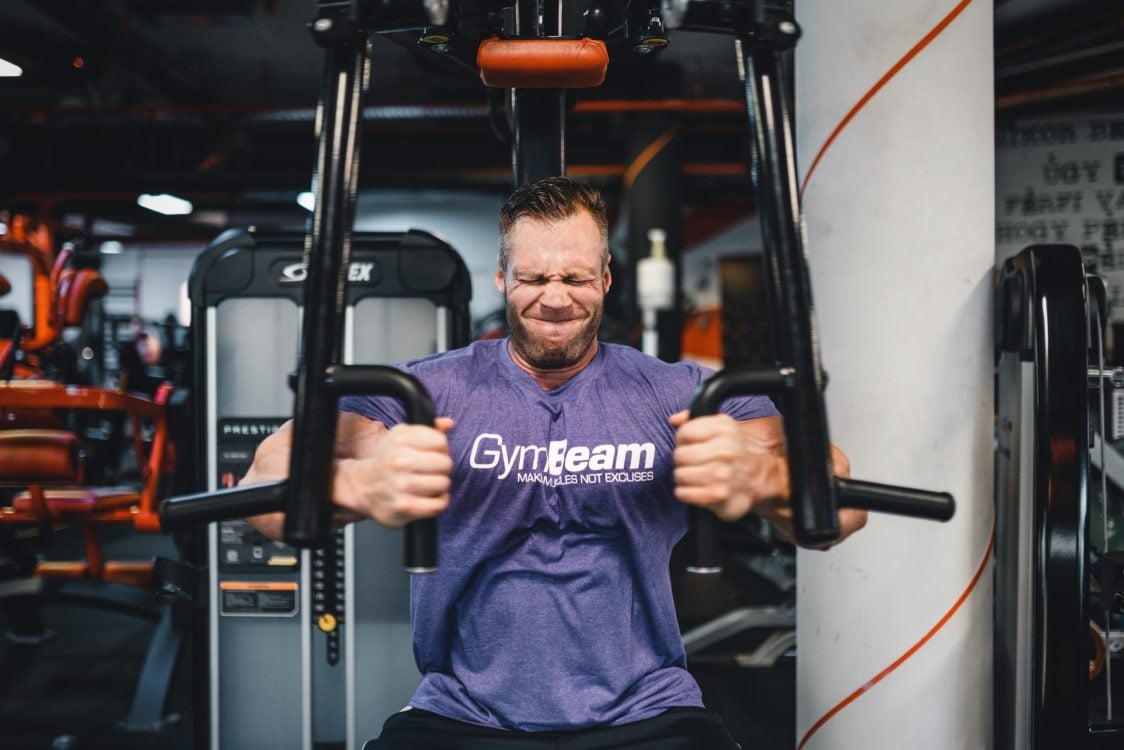
How many reps should you do to lose weight?
The answer to this question is kind of hidden between the lines, so let’s shine a light on this. The basis for successful weight loss is a diet that respects the calorie deficit, and this is non-negotiable. It is also necessary to have a good training plan to help you maintain as much muscle mass as possible and to promote the loss of fatty tissue.
What is the energy expenditure during training?

- The duration of training has a direct effect on the amount of calories burned. But you need to watch the active time while training, as standing around and talking at the bar doesn’t help your body to burn much energy.
- The intensity of training can be determined for our needs using heart rate. The more intense the training, the higher your heart rate, and thus you burn more energy.
- Body weight affects energy expenditure. The higher it is, the greater the energy output. Body composition also plays a role, where more muscle mass burns more energy than fat tissue during movement.
To maintain muscles during weight loss, it is crucial to sufficiently increase training load during strength training and to increase protein intake especially after training, since this combination can sufficiently stimulate muscle protein formation (MPS). [14-16]
A study by Longland et al. showed that it is possible to gain muscle even in a relatively high caloric deficit (40% calorie reduction compared to body requirements) in the context of strength training and high protein intake of 2.4 grams per kilogram body weight. Individuals with this higher protein intake in the study lost less than 5 kilograms of fatty tissue and gained 1.2 kilograms of muscle mass on average. [14-16]
The most common myths about strength training, the number of reps per set and weight loss
1. When losing weight it is best to exercise with a high number of reps
Strength training in weight loss, together with an increased protein intake, should contribute to maintaining and possibly increasing muscle mass. The key variable of muscular hypertrophy is considered to be mechanical tension in the form of constantly increasing load on the dumbbell. This is also one of the conditions for progressive overload that is needed to push borders and continuously improve. This allows us to conclude that the most appropriate strategy is to focus on a combination of 4-6 reps with about 80-85% 1RM and 8-12 reps with 60-75% 1RM. In this way you will maintain muscle strength and muscle mass. Approximately a 30-gram serving of whey protein should be taken to maximize muscle protein synthesis after training. After a full-body workout, it may be as much as 40 grams. [13] [15]
Again, a high number of reps should be used only for isolated exercise, or this strategy should be avoided and weight loss supported by increasing energy output through more activity during the day and movement in the form of NEAT. If you wonder what effect the level of daily activity has on weight loss, read our article What Is the Most Important Factor in Weight Loss?
2. Women must exercise differently than men
Long story short: “No, they don’t have to.” The setting of strength training is based on the goals of the athlete and possibly the required specific adaptations in relation to another sport activities. For most women who exercise to feel good in their body, a similar general scheme applies as for men. The only difference can be the strengthening and increase in muscle mass in different muscle areas. While men mainly focus on the chest, back and arms, women, on the contrary, direct their attention to the legs, butt and abs. However, this realistically means adding and removing targeted exercises as part of a comprehensive training plan. Girls, don’t be afraid to lift heavyweights, you’ll be surprised what you can do!
3. Women should exercise with a lower load and higher reps than men
As the previous point shows, women should not exercise differently than men. Whilst it is true that women generally have less strength compared to men, the setting of their training plan will be guided by the current maximum strength options, which will be smaller compared to men. But the only difference will be a different weight on the dumbbell. The generally recommended number of reps of exercise is the same. Strengthening the body simply represents the loss of body fat and an increase in muscle mass in targeted areas.
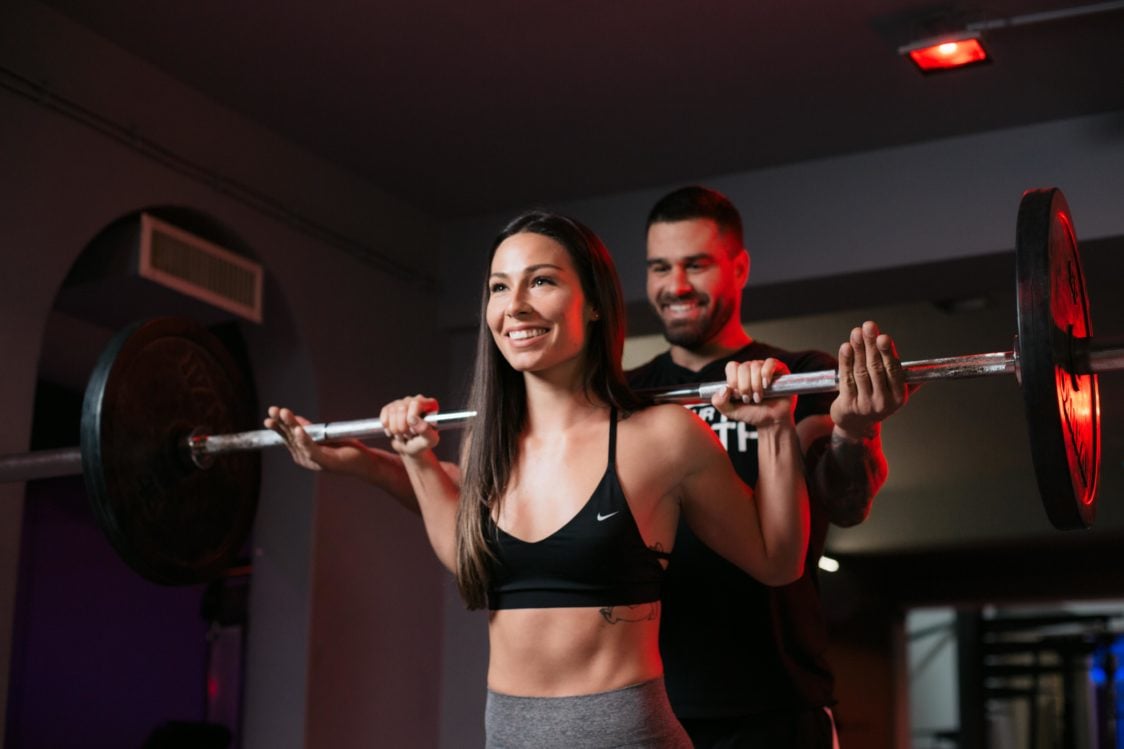
4. Lifting weights will make women look like a female version of Arnold
Women’s fear that lifting weights will make them look like a female version of Arnold Schwarzenegger or Ronnie Coleman is unfounded. Women generally do not have the prerequisites for such muscle growth as men, due to differing hormones.
When, dear girls, you start lifting weight, you can realistically expect muscle growth, but it would be not as big as you imagine it. Thus, you will get rid of subcutaneous fat, and overall, you will strengthen your body, increase your self-esteem, and you will feel much better in your body.
Strength training basically helps to sculpt our body. We each have our own body, which we can change as much as possible with strength training according to our wishes.
5. During exercise and weight loss you need to sweat as much as possible and therefore you need to do a large number of reps
Sweating is a natural cooling mechanism by which the body gets rid of excess heat produced by the muscles during sporting activity. Sweating is very individual in itself and has practically nothing to do with more effective weight loss. Therefore, there is no need to practice an unreasonably high amount of repetition exercises just to make you sweat more, or to wear extra layers of clothing. [17]
It also doesn’t help to wrap your stomach in plastic wrap and hope it helps you lose weight while you’re working out with thousands of crunches. If you want to learn more about belly weight loss, read our article Stomach Crunches and Sit-ups: Why They Do not Help You Lose Stomach Fat?
What number of reps and with what weight load is appropriate for training?
primary target | number of reps | load |
|---|---|---|
| Increase in strength | 2–6 | 80–95 % 1RM |
| Improving muscle endurance | 15+ | under 50 % 1RM |
| Muscle growth | 8–12 | 60–75 % 1RM |
| Muscle growth* | 6–30 | close to muscle failure |
| Losing weight and maintain muscle | 4–12 | 60–85 % 1RM |
| Losing weight and maintain muscle* | 6–30 | close to muscle failure |
*more reps should be used for the last set of exercises or in the case of training of isolated muscle areas
What is the lesson?
The number of reps per set is an important training variable, but there is no need in reading too much into it. If you use a wide range of reps near muscle failure in your workout, you probably won’t make a mistake. In difficult multi-joint basic exercises such as squats or deadlifts, due to muscle growth and maintenance during weight loss, it is advisable to focus on heavier sets in the range of approximately 4-12 reps with a load of 60-85% 1RM. You’d better save a high number of reps for the last set of isolated exercises, where you’ll increase metabolic stress.
Even during weight loss, it is unwarranted to practice a large number of reps. The body needs to be given a strong enough training impulse that it needs muscles and not get rid of them. Adequate protein intake, especially whey protein after training, will help increase this impulse.
So, what number of reps per set is best? Even Tom Cruise wouldn’t answer that in the next Mission Impossible. For the most effective muscle gain and maintenance during weight loss, choose sets with a wide range of reps in close proximity to muscle failure.
And what number of reps do you think is best? Share your experience, advice and tips with us in the comments. If you liked the article, promote it by sharing it so that your friends know that they do not need to exercise with a high number of reps for weight loss.
[1] Schoenfeld, B. J., – The Mechanisms of Muscle Hypertrophy and Their Application to Resistance Training – https://doi.org/10.1519/JSC.0b013e3181e840f3
[2] Nicholas A. Burd, West, D. W. D., Moore, D. R., Atherton, P. J., Staples, A. W., Prior, T., Tang, J. E., Rennie, M. J., Baker, S. K., & Phillips, S. M. – Enhanced amino acid sensitivity of myofibrillar protein synthesis persists for up to 24 h after resistance exercise in young men – https://doi.org/10.3945/jn.110.135038
[3] William J. Kraemer, W. J., Adams, K., Cafarelli, E., Dudley, G. A., Dooly, C., Feigenbaum, M. S., Fleck, S. J., Franklin, B., Fry, A. C., Hoffman, J. R., Newton, R. U., Potteiger, J., Stone, M. H., Ratamess, N. A., Triplett-McBride, T., & American College of Sports Medicine – American College of Sports Medicine position stand. Progression models in resistance training for healthy adults – https://doi.org/10.1097/00005768-200202000-00027
[4] Schoenfeld, B. J., Grgic, J., Ogborn, D., & Krieger, J. W. – Strength and Hypertrophy Adaptations Between Low- vs. High-Load Resistance Training: A Systematic Review and Meta-analysis. – https://doi.org/10.1519/JSC.0000000000002200
[5] Grgic, J., Schoenfeld, B. J., Orazem, J., & Sabol, F. – Effects of resistance training performed to repetition failure or non-failure on muscular strength and hypertrophy: A systematic review and meta-analysis. – https://doi.org/10.1016/j.jshs.2021.01.007
[6] Adam Zając, Chalimoniuk, M., Maszczyk, A., Gołaś, A., & Lngfort, J. – Central and Peripheral Fatigue During Resistance Exercise—A Critical Review – https://doi.org/10.1515/hukin-2015-0118
[7] Lasevicius, T., Schoenfeld, B. J., Silva-Batista, C., Barros, T. de S., Aihara, A. Y., Brendon, H., Longo, A. R., Tricoli, V., Peres, B. de A., & Teixeira, E. L. – Muscle Failure Promotes Greater Muscle Hypertrophy in Low-Load but Not in High-Load Resistance Training. – https://doi.org/10.1519/JSC.0000000000003454
[8] Ribeiro, A. S., Dos Santos, E. D., Nunes, J. P., & Schoenfeld, B. J. – Acute Effects of Different Training Loads on Affective Responses in Resistance-trained Men. – https://doi.org/10.1055/a-0997-6680
[9] Santanielo, N., Nóbrega, S. R., Scarpelli, M. C., Alvarez, I. F., Otoboni, G. B., Pintanel, L., & Libardi, C. A. – Effect of resistance training to muscle failure vs non-failure on strength, hypertrophy and muscle architecture in trained individuals. – https://doi.org/10.5114/biolsport.2020.96317
[10] Nuell, S., Illera-Domínguez, V. R., Carmona, G., Alomar, X., Padullés, J. M., Lloret, M., & Cadefau, J. A. – Hypertrophic muscle changes and sprint performance enhancement during a sprint-based training macrocycle in national-level sprinters. – https://doi.org/10.1080/17461391.2019.1668063
[11] Ozaki, H., Loenneke, J. P., Thiebaud, R. S., & Abe, T. – Cycle training induces muscle hypertrophy and strength gain: Strategies and mechanisms. – https://doi.org/10.1556/APhysiol.102.2015.1.1
[12] Jäger, R., Kerksick, C. M., Campbell, B. I., Cribb, P. J., Wells, S. D., Skwiat, T. M., Purpura, M., Ziegenfuss, T. N., Ferrando, A. A., Arent, S. M., Smith-Ryan, A. E., Stout, J. R., Arciero, P. J., Ormsbee, M. J., Taylor, L. W., Wilborn, C. D., Kalman, D. S., Kreider, R. B., Willoughby, D. S., … Antonio, J. – International Society of Sports Nutrition Position Stand: Protein and exercise. – https://doi.org/10.1186/s12970-017-0177-8
[13] Damas, F., Libardi, C. A., & Ugrinowitsch, C. – The development of skeletal muscle hypertrophy through resistance training: The role of muscle damage and muscle protein synthesis. – https://doi.org/10.1007/s00421-017-3792-9
[14] Garthe, I., Raastad, T., Refsnes, P. E., Koivisto, A., & Sundgot-Borgen, J. – Effect of two different weight-loss rates on body composition and strength and power-related performance in elite athletes. – https://pubmed.ncbi.nlm.nih.gov/21558571/
[15] Areta, J. L., Burke, L. M., Camera, D. M., West, D. W. D., Crawshay, S., Moore, D. R., Stellingwerff, T., Phillips, S. M., Hawley, J. A., & Coffey, V. G. – Reduced resting skeletal muscle protein synthesis is rescued by resistance exercise and protein ingestion following short-term energy deficit. – https://doi.org/10.1152/ajpendo.00590.2013
[16] Longland, T. M., Oikawa, S. Y., Mitchell, C. J., Devries, M. C., & Phillips, S. M. – Higher compared with lower dietary protein during an energy deficit combined with intense exercise promotes greater lean mass gain and fat mass loss: A randomized trial. – https://doi.org/10.3945/ajcn.115.119339
[17] Osilla, E. V., & Sharma, S. – Physiology, Temperature Regulation. – http://www.ncbi.nlm.nih.gov/books/NBK507838/


Add a comment